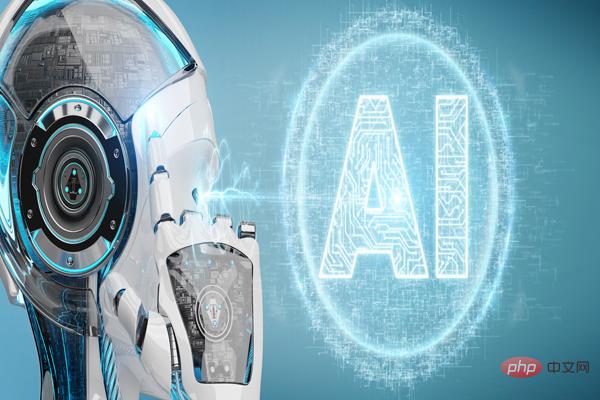Home >Technology peripherals >AI >Businesses need to know how to get AI reasoning right
Businesses need to know how to get AI reasoning right
- WBOYWBOYWBOYWBOYWBOYWBOYWBOYWBOYWBOYWBOYWBOYWBOYWBforward
- 2023-04-14 13:40:031143browse
Artificial intelligence is rapidly transforming from a technology used by large tech companies such as Amazon, Google, Microsoft, Netflix and Spotify to a tool adopted by mid-sized enterprises to create new products, increase revenue, improve customer engagement and retention, and Expand into new markets.

However, despite the excitement around artificial intelligence, many CIOs are struggling to figure out how to create a skill set within their organizations that not only Can handle the development of artificial intelligence, but also the training and deployment of whatever is developed. In fact, only 26% of organizations are producing AI this year, while 43% are in the evaluation stage, according to research firm O'Reilly. That’s how difficult it is to move AI from development to operations—and back to development again, as we’ll see.
However, every challenge has potential for growth, and according to a study by PwC, the global AI economy is expected to reach $15.7 trillion by 2030. Any organization looking to capitalize on this growth dividend, whether in smart manufacturing, retail, healthcare, energy and many other industries, needs to know how reasoning makes AI work.
Where does artificial intelligence land?
There is a wealth of information and expertise in the field of artificial intelligence development. For CIOs, the biggest challenge is deployment. Inference - the process of running artificial intelligence models in production - is an important part of the implementation of artificial intelligence. For example, in self-driving cars, critical AI decisions occur in milliseconds, putting people’s lives at risk.
Unlike traditional applications such as sales management software, AI models running inference need to be constantly retrained and deployed to stay current. This makes managing the AI application lifecycle more complex, but the benefits are significant.
Boost Sales, Avoid Closures, Serve Customers with Reasoning
Reasoning is the key to solving a range of challenges faced by many industries today.
Deep learning can help automate functions, recommend products, and even provide natural language processing. In retail and entertainment, and even professional social networks, recommendation system reasoning can help change erratic sales cycles and aid customer retention. Even if a customer doesn't make an immediate additional purchase, a well-targeted recommendation can plant the seeds for future sales. It can also increase brand affinity and display merchandise that matches consumer tastes and interests.
In manufacturing, reasoning can help companies find errors in production and identify potential failures before equipment even breaks down. AI-powered industrial inspections can identify objects, obstacles and people, perform millisecond calculations and reduce downtime. These advantages make AI vision systems a top priority for any company working in complex production environments.
Call centers use inference to automate customer service and quickly route customer questions to the people best able to help. When someone needs help from an airline, bank, or internet service provider, they usually want to talk to someone as quickly as possible. At a time when labor shortages are widening, AI helps solve simple problems and ensures customers are quickly connected to the right person who can solve more complex problems.
Grow your team smarter with pre-trained models
Knowing how inference works is just the beginning of your AI journey. The next steps are to develop a strategy and execute the plan. The problem is, companies face challenges finding top talent to fill a variety of positions. For companies that are just starting to use AI, assembling a team of AI development experts may be more difficult.
At this time, use third-party and open source pre-trained models and frameworks to gain a head start and overcome the talent shortage. These resources significantly reduce the burden on teams deploying enterprise-grade AI, as developers can adapt and customize existing models to run inference rather than trying to build them from scratch.
Companies can also train existing engineers and developers through artificial intelligence training. A growing number of partner companies offer free development labs to businesses, providing step-by-step guidance on critical AI use cases, including building chatbots for customer service or sales support, image classification systems for security, and AI for better operations. price prediction models, and many other basic AI use cases.
IT Takes the Helm of Production AI
Once the foundation for inference work is in place, CIOs should adopt supported software for production applications—whether it runs on bare metal, a virtualized data center foundation In terms of facilities, they are still in the cloud.
Additionally, consideration should be given to offering enterprise-grade AI software that not only fully supports inference, but also supports the complementary practices of data science and model development, as it simplifies AI deployment. As AI expands from initial deployment into new business areas, teams can rely on a comprehensive solution rather than having to develop unique workflows.
AI workloads are different from traditional enterprise applications, but now it’s easier than ever to learn from the experts to ensure they are implemented correctly. Understanding the tools available for efficient, low-cost enterprise AI inference with pre-trained models, specialized development labs, and enterprise-grade support ensures CIOs are prepared with plans to solve the challenges faced by every enterprise embarking on their AI journey. challenges.
The above is the detailed content of Businesses need to know how to get AI reasoning right. For more information, please follow other related articles on the PHP Chinese website!
Related articles
See more- Technology trends to watch in 2023
- How Artificial Intelligence is Bringing New Everyday Work to Data Center Teams
- Can artificial intelligence or automation solve the problem of low energy efficiency in buildings?
- OpenAI co-founder interviewed by Huang Renxun: GPT-4's reasoning capabilities have not yet reached expectations
- Microsoft's Bing surpasses Google in search traffic thanks to OpenAI technology

